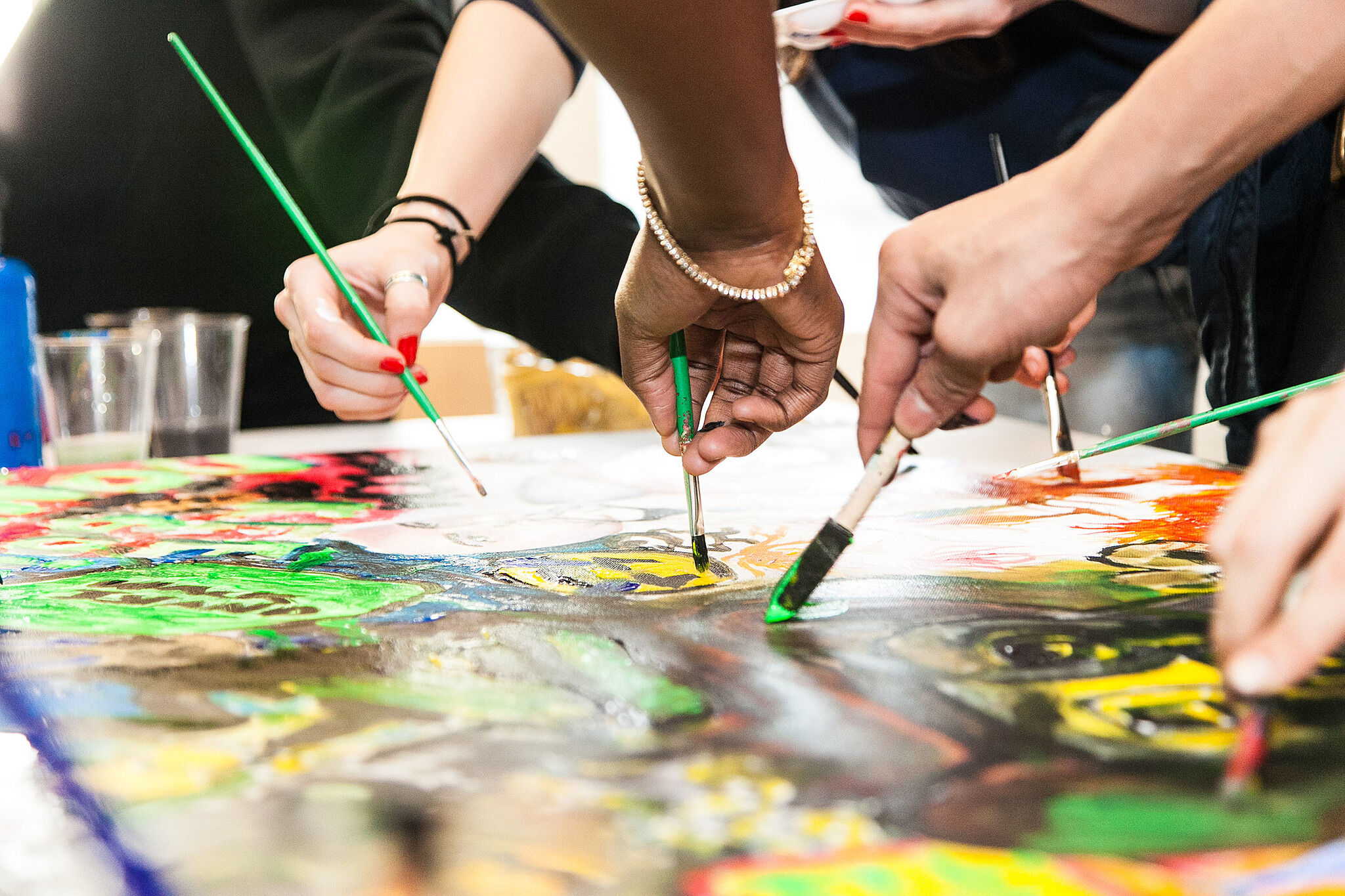Education at the Whitney
For more than fifty years the Whitney has offered a rich variety of education programming.
About & history
In her 1994 book Teaching to Transgress, bell hooks states that "education [is] about the practice of freedom." The Education Department at the Whitney Museum of American Art is dedicated to engaging in that practice, and to promoting diverse voices within American art and our community. Focusing especially on those who have been historically marginalized, we place the learner at the center of our programs and resources.
At the Whitney, we see museum education as an experimental process in which art serves as a catalyst for exploration, learning, and growth.
The department is comprised of three key areas all working by different means towards the same goal:
At the Whitney, Public Programs engage audiences in critical dialogues on art and cultural production today. Artists, curators, scholars, writers, and other thinkers participate in a wide range of talks, workshops, courses, performances, readings, and film screenings that explore current exhibitions, the Whitney’s permanent collection, and broader issues in contemporary art and culture. These programs emerge from research developed in collaboration with artists and outside partners such as academic institutions, publishers, and other cultural organizations. Public Programs create opportunities for audiences to explore artistic practices, to look closely at works of art, and to understand art in ways that extend beyond the walls of the Whitney.
The Interpretation team’s role is to ensure that audiences have the context they need to find the art on view meaningful and engaging. We produce exhibition graphics, video and audio materials, as well as access resources including ASL videos, transcripts, and verbal descriptions. We also train Docents and Teaching Fellows in the best ways to interpret exhibitions for a live audience. Our goal is to address our visitors as active partners in the creation of meaning, not passive recipients of information.
The Whitney’s Social Impact division works with intersectional and intergenerational communities and individuals through creative, inclusive, accessible, ongoing art programs. The team is comprised of five different areas: School and Educator Programs, Teen Programs, Family Programs, Community Programs, and Access Programs. The Social Impact team collaborates with artists and communities to foster human connection and encourage positive change. Social Impact programs and initiatives strive to build a sense of belonging, expand perspectives, and enhance well-being through art with the goal of providing an entry point for communities that museums have traditionally underserved.
In 2021, the department was restructured to foster partnerships across departments to maximize the impact of engagement, access, and inclusion for disabled and non-disabled audiences.
The Laurie M. Tisch Education Center
The Laurie M. Tisch Education Center is the Whitney Museum's dedicated space for education. Centrally located on the Museum’s Third Floor and adjacent to the Susan and John Hess Family Theater, the Education Center provides opportunities for museum educators to work in innovative ways, offering audiences drop-in programming, hands-on learning, and in-depth and interdisciplinary programming. The Laurie M. Tisch Education Center is a hub where visitors can engage with artists and enliven and enrich their museum experience.

